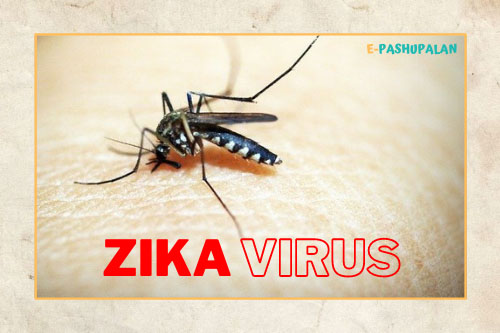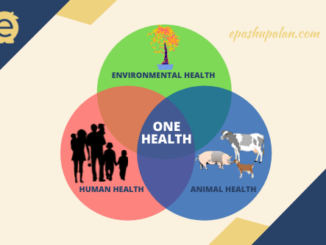Introduction
In the present situation, the Zika virus is one of the most significant new viruses. The Zika virus was named after the Zika forest in Uganda, where it was discovered in a rhesus macaque monkey for the first time. Mosquitoes of the genus Aedes have been established as the virus’s primary vectors. In humans, Zika virus infection causes mild clinical symptoms such as fever, chills, and microcephaly, and there is a connection between Guillain-Barre syndrome and microcephaly in Zika patients. There is currently no vaccine for Zika. Bharath Biotech, an Indian pharmaceutical firm, claims to have developed a vaccine against the virus that has proven effective in animal inoculation studies.

Etiology
The Zika virus is a member of the Flavi viridae family, which also includes Dengue virus, Yellow fever virus, West Nile virus, and other clinically important mosquito-borne viruses. A single-stranded RNA virus with a positive sense. The genome of the Zika virus is 10974 nucleotides long and encodes 3419 amino acids. Except for approximately 10 amino acids surrounding the Asn 154 glycosylation site in each of the 180 envelope glycoproteins that make up the icosahedral shell, the mature Zika virus has a structure that is similar to that of other Flavi viruses. The virus is divided into two lineages, African and Asian, based on phylogenetic analysis. The virus is divided into two distinct lineages based on phylogenetic analysis: African and Asian. The Asian lineage was discovered in Malaysia for the first time during the virus’s migration from Africa to Southeast Asia.
Zika virus: Major milestones in the history of pandemic
- 1947 – Zika virus was isolated from the samples of Rhesus monkey by scientists conducting routine surveillance for Yellow fever in Zika forest, Uganda.
- 1948 – From the same site, virus was recovered from Aedes africanus mosquito
- 1954 – Three human cases were reported from Nigeria
- 1960’s – 80’s – Sporadic human cases were reported mostly by serological studies in Africa. Although no death or hospitalizations were reported, seroprevalence studies indicate widespread human exposure to the virus.
- 2007- First major outbreak was reported at the island of Yap, Micronesia. An infected person or mosquito is presumed to be the source.
- 2008- First sexual transmission of the virus was reported from an infected US scientist to his wife
- 2012- Phylogenetic studies prove the existence of 2 distinct lineages – African and Asian.
- 2013 – Virus was isolated from the semen of a patient in Tahithi island, adding to the evidence that Zika can be sexually transmitted.
- 2014 March 20 – Through PCR, four one day old infants born to infected mothers were diagnosed positive for Zika virus. This led to the assumption that Zika can be transmitted by trans placental route also.
- 2014 March 31 – The risk of virus transmission through blood transfusion was brought to light when 1505 asymptomatic blood donors were tested positive via pcr
- 2015 March 29 – Outbreak reported in Brazil with illness characterized with skin rashes with or without fever.
- 2015 May 7 – PAHO and WHO issued epidemiological alert to Zika.
- 2015 July 17 – Association between Zika and Guillain Barre syndrome was confirmed.
- 2015 November 17- Brazil, Zika virus was detected in the amniotic fluid of 2 pregnant women whose fetuses were confirmed to have microcephaly
Transmission
Since it was isolated from numerous non-human primates and other wild and domestic animals, the virus is thought to have several animal reservoirs. There are four main transmission routes that have been identified. Mosquito bites, specifically Aedes, Anopheles, and Mansoni, are thought to be the main path. Aedes aegypti, Aedes africanus, Aedes albopictus, and other species are among the most common. Aedes aegypti is believed to be the main vector in Asia, and it was implicated in the French Polynesia outbreak. Since virus isolation studies have indicated that Aedes albopticus was responsible for the outbreak in Gabon in 2007, it is thought to be the main vector in Africa. Female mosquitos that have been infected will pass the virus on to their offspring via the ovarian path. When Zika virus RNA was discovered in the amniotic fluid of two mothers who had Zika virus symptoms during pregnancy and delivered babies with microcephaly, it was shown that the virus could be transmitted via the uterus. There have been no records of children developing an infection from breast milk.
Sexual intercourse is another potential form of virus transmission. This was shown when an American scientist infected in Senegal sexually transmitted the disease to his partner. The disease is thought to have been spread by contaminated sperm. The risk of the virus being spread by other body fluids was ruled out because the infected scientist’s four children did not contract the disease. During the outbreak in French Polynesia, the probability of Zika virus transmission through blood transfusion was demonstrated. Blood samples from 1505 asymptomatic donors were analysed using PCR, and 42 of them tested positive for Zika.
Pathophysiology
Glycoprotein E is in control of virus attachment to unknown cellular receptors. After endocytic virus uptake and nucleocapsid uncoating, viral RNA is released into the cytoplasm of the host cell. Endoplasmic reticulum develops viral polyprotein and modifies it. Before being released out, immature virions accumulate in the ER and secretory vesicles. The viral content of Zika infection is elevated on the day of inoculation, decreases to undetectable levels by day 10, increases by day 15, and remains high on days 20 to 60, implying a 10-day incubation period.
Symptoms in human host
The majority of people who are infected with ZIKV may have no symptoms or may have mild symptoms such as fever (37.8°C to 38.5°C), rashes, headache, conjunctivitis, joint pain, and myalgia. Symptoms are similar to those of other mosquito-borne diseases such as dengue fever and chikun guinya. In affected persons, stomach disorders, mucous membrane ulceration, and pruritus are uncommon. Asthenia following an infection is also normal. Guillain Barre Syndrome (GBS) may be a complication associated with ZIKV infection, according to a study conducted during the outbreak in French Polynesia. 41 (98 percent) of the 42 GBS patients tested positive for ZIKV antibodies. The clinical characteristics of GBS were also discovered in this research.
This is an inflammatory disease in which the immune system of the body begins to attack the peripheral nervous system. When GBS is followed by a virus infection, it is thought that the virus may have made the immune system less discriminative, allowing immune cells to begin killing the nerves’ myelin sheath. In Columbia, from November 2015 to March 2016, ZIKV infection caused clusters of GBS cases. Microcephaly in children born to mothers infected with ZIKV is another complication. Two pregnant women were diagnosed with foetal microcephaly in the Brazilian city of Rio de Geniro. ZIKV was found to be positive on both amniocentesis, real time PCR and blood checks, despite the fact that blood tests were negative.
Diagnosis and Treatment
Symptoms and a recent history of travel to a region where the Zika virus is active may be used to make a diagnosis. Only laboratory tests on blood and other bodily fluids such as urine, saliva, and sperm will confirm the diagnosis. Since approximately 80% of ZIKV infections are asymptomatic, and 20% only have mild clinical symptoms, current diagnosis is difficult, and may overlap with co-circulating diseases such as dengue and chikun guinya. The identification of ZIKV RNA in patients with fever and consistent symptoms can be used to confirm the diagnosis. The presence of RNA in the blood tends to be intermittent, occurring 3 to 5 days after the onset of symptoms. There have been cases where RNA has been found in the serum up to 10 weeks before the onset of symptoms and up to 58 days after the onset of symptoms.
Saliva, urine, and sperm have all been proposed as possible sources for infection diagnosis in many studies. Because of the presence of cross reactance, Zika must be distinguished from other Flavi viridae members. To distinguish between Dengue and Zika, the PRNT (Plate Reduction Neutralization Test) is used. The identification of Zika virus in the brain, amniotic fluid, and CSF of reported cases provided pathogenic evidence of Zika causing microcephaly. There are no clear ZIKV drugs available. According to the CDC’s recommendations, patients should be cared for their symptoms, get plenty of rest, and drink plenty of water. Acetaminophen is recommended for pain and fever, and NSAIDS should be started only after Dengue fever has been ruled out.
Prevention and Control
Vaccinations against Zika are not actually being used in humans. Bharat Biotech, based in Hyderabad, recently announced the production of a killed Zika vaccine that was found to be 100 percent effective in mice models. The vaccine was created using the virus’s African stain. Mice were given two doses (5 and 10 microgram) of vaccine via intramuscular route on days 0 and 21 and were found to be protected against Zika virus seven days later. Taking care to avoid mosquito bites is one form of prevention suggested by the CDC. Condoms are recommended to prevent virus transmission by sex. To prevent cross-border transmission, it is best to stop visiting Zika-infected areas. All Zika prevention measures must be strictly followed by pregnant women.
| The content of the articles are accurate and true to the best of the author’s knowledge. It is not meant to substitute for diagnosis, prognosis, treatment, prescription, or formal and individualized advice from a veterinary medical professional. Animals exhibiting signs and symptoms of distress should be seen by a veterinarian immediately. |






Be the first to comment